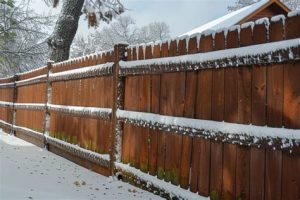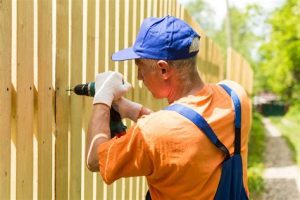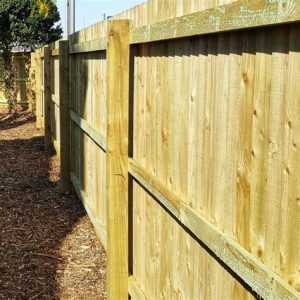Explore local zoning laws, property line regulations, height restrictions, permitted materials, and historical preservation requirements for fencing in your area.When it comes to installing a fence around your property, understanding the local laws and regulations is crucial. Navigating the maze of zoning laws, property line regulations, and height restrictions can make the difference between a seamless installation and potential legal headaches. Each community has its own set of rules that dictate what is permissible, from the materials you can use to the specifications for fence height. Additionally, if your property is in a historic district, you may face additional preservation requirements that could affect your choices. In this blog post, we will explore the various local laws that impact your fence installation, ensuring that you stay compliant while creating the perfect boundary for your home. Whether you are an experienced DIY enthusiast or new to home improvement projects, we’ve got the insights you need to make informed decisions about your fencing options.
Understanding local zoning laws
When planning to install a fence on your property, it’s crucial to understand the implications of local zoning laws. These laws can dictate a variety of factors, including the placement, height, and style of fences in your area. Before you make any commitments, researching your local regulations is imperative to avoid potential fines and required removals.
Local zoning laws are governed by the municipality and often vary significantly from one area to another.
- Height limitations
- Setback requirements (how far your fence must be from the property line)
- Types of materials allowed
Understanding these rules not only ensures compliance but also enhances neighborhood relations. It’s advisable to check with your local zoning office or consult the municipal code for specifics regarding your area.
Researching property line regulations
Understanding property line regulations is a crucial aspect of installing a fence. Before beginning any installation process, it’s essential to know where your property boundaries lie. This not only helps in staying within your limits but also prevents potential disputes with neighbors.
Local municipalities usually have specific guidelines about property lines. In many cases, property lines are established based on legal surveys, but they can also be influenced by local zoning laws. It is recommended to check with your local zoning office to obtain proper documentation that can define your property boundaries clearly. The use of an official property survey can provide clarity and ensure you are installing your fence properly.
Additionally, many municipalities may have their own stipulations regarding the height and type of fencing allowed in relation to your property lines. It’s advisable to always verify these regulations before making any decisions about materials and installation to avoid unnecessary complications down the line.
Impact of height restrictions on fence
When installing a fence, one of the most critical factors to consider is the height restrictions imposed by local zoning laws. These regulations vary greatly from one municipality to another, and they can significantly impact your fence design and installation plans.
Height restrictions are often put in place for various reasons, including aesthetic considerations, safety concerns, and maintaining an open environment in residential areas. For instance, many communities have limits on the height of fences in front yards to prevent obstructions to visibility and to promote a more visually appealing neighborhood. Typically, front yard fences are limited to 3-4 feet, while backyards may allow for taller fences, often ranging from 6 to 8 feet.
Understanding these restrictive laws is essential before proceeding with any fence installation. Failure to comply with height restrictions could lead to potential fines or mandates to remove or alter your fence. Moreover, it’s advisable to consult your local zoning office or review the relevant municipal code to ensure your fence meets all regulations. Often, a simple application process exists to gain permits or seek variances, which may allow for modifications beyond standard restrictions.
Materials allowed by local ordinances
When it comes to installing a fence, one of the most crucial factors to consider is the materials permitted by your local ordinances. Local governments often have specific regulations regarding the types of materials you can use, which can vary greatly depending on the area. Understanding these regulations is not only essential for compliance but also impacts the aesthetic appeal and durability of your fence.
Typically, materials such as wood, vinyl, metal, and composite are commonplace in most local regulations. However, some areas may restrict certain materials due to environmental concerns or neighborhood aesthetics. For instance, a historic district may require fences to be made from traditional materials that match the historic character of the area.
| Material | Common Uses | Local Restrictions |
|---|---|---|
| Wood | Residential fences | May require treatment for weather resistance |
| Vinyl | Durable and low-maintenance options | May have color restrictions in some neighborhoods |
| Metal | Security and commercial applications | Height and finish regulations may apply |
| Composite | Eco-friendly alternatives | Check for certifications required |
Additionally, some zones may impose regulations on the finish and color of fence materials. Certain neighborhoods may prioritize a cohesive look, thereby limiting the freedom of colors or finishes you can choose.
Dealing with historical preservation requirements
When it comes to installing a fence on properties located in historically significant areas, one must navigate through various historical preservation requirements. These rules aim to protect the character and integrity of the neighborhood while ensuring that any changes or additions made to the property comply with the historical standards set forth by local ordinances.
Before planning your fence installation, it is crucial to consult your local historical preservation office. They can provide you with the necessary guidelines on what materials and designs are acceptable. Often, specific fence styles and materials are mandated to reflect the historic aesthetic of the area. For instance, a wrought-iron fence may be permissible in one district, while a wooden picket fence might be favored in another.
Moreover, obtaining the required permits can be a multi-step process. Your proposal may need to be reviewed by a historical review board, and in some cases, public hearings could be necessary. To ensure a smoother process, it is advisable to gather all your information and present a clear plan that aligns with the historical significance of your property.
Frequently Asked Questions
What are the common local laws related to fence installation?
Common local laws can include height restrictions, property boundary regulations, material restrictions, and required permits for installation.
How can I find out the specific fencing regulations in my area?
You can find local fencing regulations by checking with your city or county’s zoning office, reviewing your homeowner’s association guidelines, or visiting official municipal websites.
Do I need a permit to install a fence?
In many areas, a permit is required for new fence installations, particularly for tall fences or those that affect property lines. Always check local regulations to confirm.
What happens if I install a fence without adhering to local laws?
If you install a fence without adhering to local laws, you may face fines, be required to remove or alter the fence, or even face legal disputes with neighbors.
Are there different regulations for residential and commercial fencing?
Yes, regulations can vary significantly between residential and commercial fencing. Commercial properties may have stricter guidelines regarding height, material, and security features.
How can local laws affect the cost of fence installation?
Local laws can affect costs by requiring permits, inspections, or certain materials, all of which can add to the overall expense of the installation process.
Can I dispute a local fence regulation?
Yes, you can typically dispute local fence regulations through an official appeal process, but it’s essential to consult with a legal expert or your local government for guidance.





